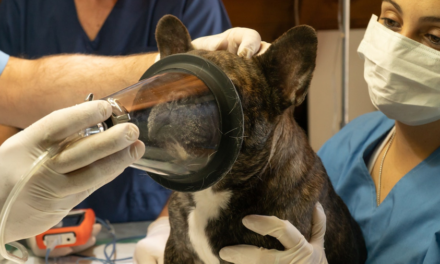The global canine cancer screening market is projected to grow from USD 1,397.0 million in 2024 to USD 2,087.9 million by 2034, according to Future Market Insights.
With an estimated compound annual growth rate (CAGR) of 4.1%, this growth is driven by the rising demand for advanced cancer screening tools as pet owners prioritise preventive healthcare for their dogs.
The canine cancer screening market is witnessing a steady increase due to advancements in diagnostic tools that allow for early detection. These innovations, including breed-specific screening methods, are expected to expand the market in the coming years.
Pet Insurance Drives Demand for Canine Cancer Screening
The increasing prevalence of pet insurance in mature markets such as the UK, Sweden, and other European countries has contributed to a growing demand for routine veterinary visits, including cancer screening. In these regions, insurance often covers routine checkups, emergency care, and advanced diagnostics, making pet owners more proactive in managing their pets’ health.
In the United States and Canada, where pet insurance penetration is lower, growing awareness about the benefits of pet insurance is driving progressive growth. As pet owners become more engaged in preventive care, routine screenings and early detection of illnesses like cancer have become common practice.
This trend has further boosted the demand for canine cancer screening tools, especially point-of-care diagnostic devices. Manufacturers are increasingly developing portable, user-friendly diagnostic tools that can be used in veterinary clinics or even in the field.
Technological Advancements Fuel Market Expansion
Technological advancements in veterinary diagnostics are playing a critical role in the market’s expansion. As veterinarians gain access to more sophisticated tools, including non-invasive screening methods, early detection of cancer in dogs has become more accurate and effective. This has had a significant impact on survival rates for dogs diagnosed with cancer.
The North American market is expected to dominate the global canine cancer screening industry due to high pet ownership rates and access to advanced veterinary care facilities. Europe and Asia-Pacific regions are also forecasted to experience substantial growth, driven by an increasing focus on pet welfare and rising disposable incomes.
Key Factors Driving Growth in Canine Cancer Screening
Several factors contribute to the projected growth of the canine cancer screening market over the next decade. These include the rising incidence of cancer in dogs, which affects nearly one in four canines, and the increasing focus on early detection and treatment. As pet ownership continues to grow worldwide, so does the demand for advanced veterinary diagnostic services.
David Wainwright, Associate Vice President at Future Market Insights, highlights that growing awareness among pet owners about the importance of early cancer detection is a key factor driving the market. As pet owners increasingly prioritise their pets’ health, the demand for sophisticated diagnostic tools is expected to rise.
Liquid Biopsy and Next-Generation Sequencing Leading the Market
By 2024, liquid biopsy, particularly blood-based tests, is expected to dominate the canine cancer screening market, holding a 36.7% market share. These tests offer a non-invasive way to detect cancer, reducing stress for the animal and improving the accuracy of diagnosis. Next-generation sequencing (NGS) technology is also playing a significant role in cancer diagnosis, holding a 27.4% market share in 2024.
NGS has revolutionised how cancer is diagnosed and treated in dogs by providing detailed genomic information that helps identify genetic mutations associated with cancer. This allows veterinarians to offer more personalised treatment options.
The UK is projected to emerge as a key region for canine cancer screening, with a CAGR of 4.4% expected from 2024 to 2034. The country’s highly developed veterinary healthcare infrastructure, coupled with advanced diagnostic technologies like liquid biopsy and NGS, is driving growth. The availability of cutting-edge facilities and expertise in early detection of cancer in dogs makes the UK a crucial player in the market’s expansion.
With increasing pet ownership and a focus on preventive care, the UK market is well-positioned to continue its growth trajectory in the coming years.
Canine Cancer Market Drivers and Opportunities
The growth of the global canine cancer screening market is primarily driven by the increasing prevalence of cancer in dogs, which is leading to higher demand for early detection and screening services. Technological advancements in diagnostics, particularly molecular diagnostics and blood-based tests, are reshaping the market and providing new opportunities for manufacturers.
Growing awareness among pet owners about canine health, coupled with investments in veterinary infrastructure and the expansion of veterinary hospitals and clinics globally, is also contributing to the market’s expansion. Developing regions, in particular, are expected to see significant growth in veterinary services as more countries invest in animal healthcare.
As pet owners become more proactive in managing their pets’ health, the global canine cancer screening market is expected to experience sustained growth over the next decade. The rise of advanced diagnostic tools, coupled with increasing awareness of the importance of early cancer detection, will continue to drive the market forward. With key regions like North America, Europe, and Asia-Pacific leading the way, the demand for innovative cancer screening solutions in dogs is set to rise, ensuring better health outcomes for pets worldwide.








